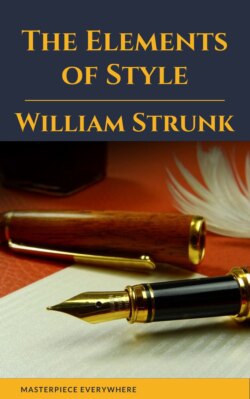Читать книгу The Elements of Style - William Strunk, Masterpiece Everywhere - Страница 8
На сайте Литреса книга снята с продажи.
5. Do not join independent clauses by a comma.
ОглавлениеIf two or more clauses, grammatically complete and not joined by a conjunction, are to form a single compound sentence, the proper mark of punctuation is a semicolon.
Stevenson's romances are entertaining; they are full of exciting adventures.
It is nearly half past five; we cannot reach town before dark.
It is of course equally correct to write the above as two sentences each, replacing the semicolons by periods.
Stevenson's romances are entertaining. They are full of exciting adventures.
It is nearly half past five. We cannot reach town before dark.
If a conjunction is inserted, the proper mark is a comma (Rule 4).
Stevenson's romances are entertaining, for they are full of exciting adventures.
It is nearly half past five, and we cannot reach town before dark.
Note that if the second clause is preceded by an adverb, such as accordingly, besides, so, then, therefore, or thus, and not by a conjunction, the semicolon is still required.
I had never been in the place before; so I had difficulty in finding my way about.
In general, however, it is best, in writing, to avoid using so in this manner; there is danger that the writer who uses it at all may use it too often. A simple correction, usually serviceable, is to omit the word so, and begin the first clause with as:
As I had never been in the place before, I had difficulty in finding my way about.
If the clauses are very short, and are alike in form, a comma is usually permissible:
Man proposes, God disposes.
The gate swung apart, the bridge fell, the portcullis was drawn up.
